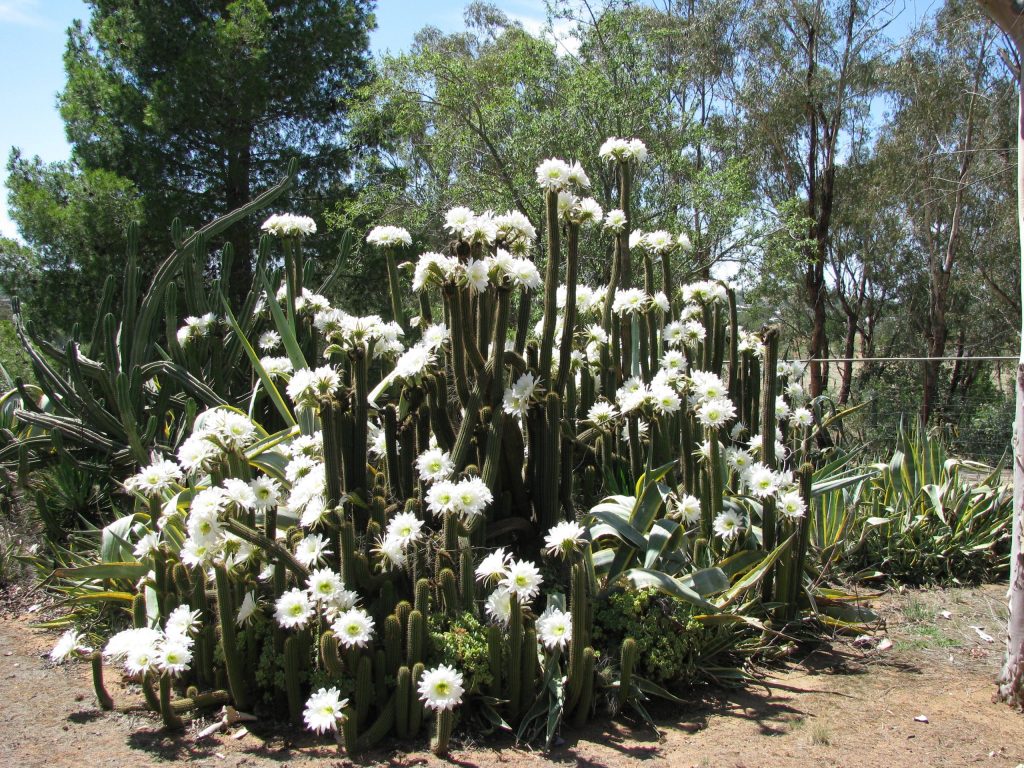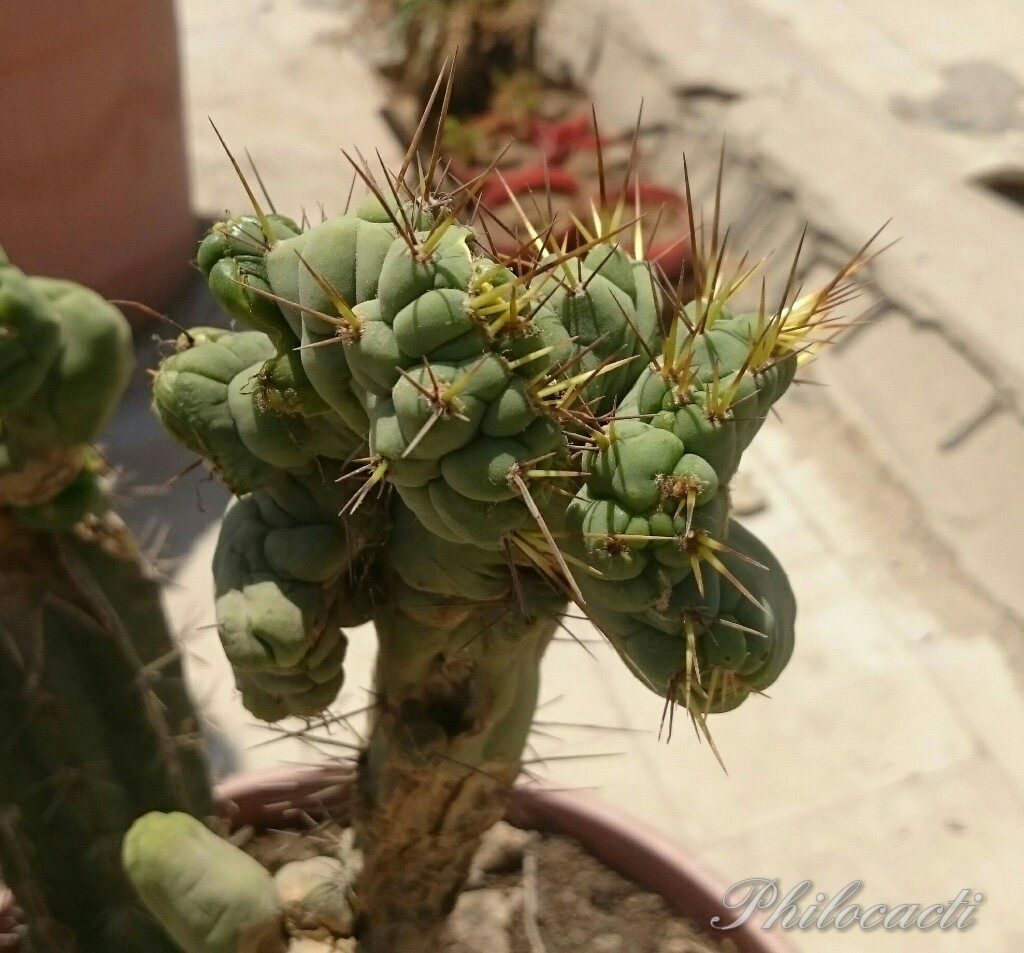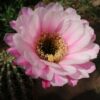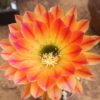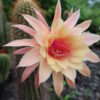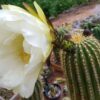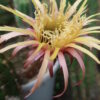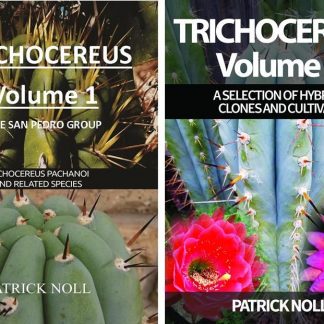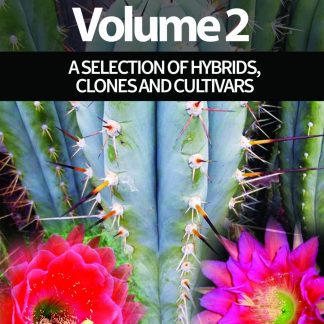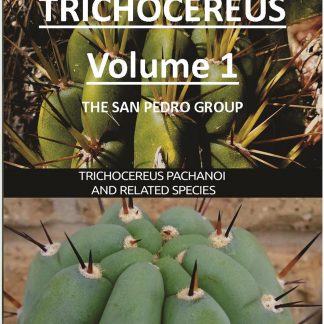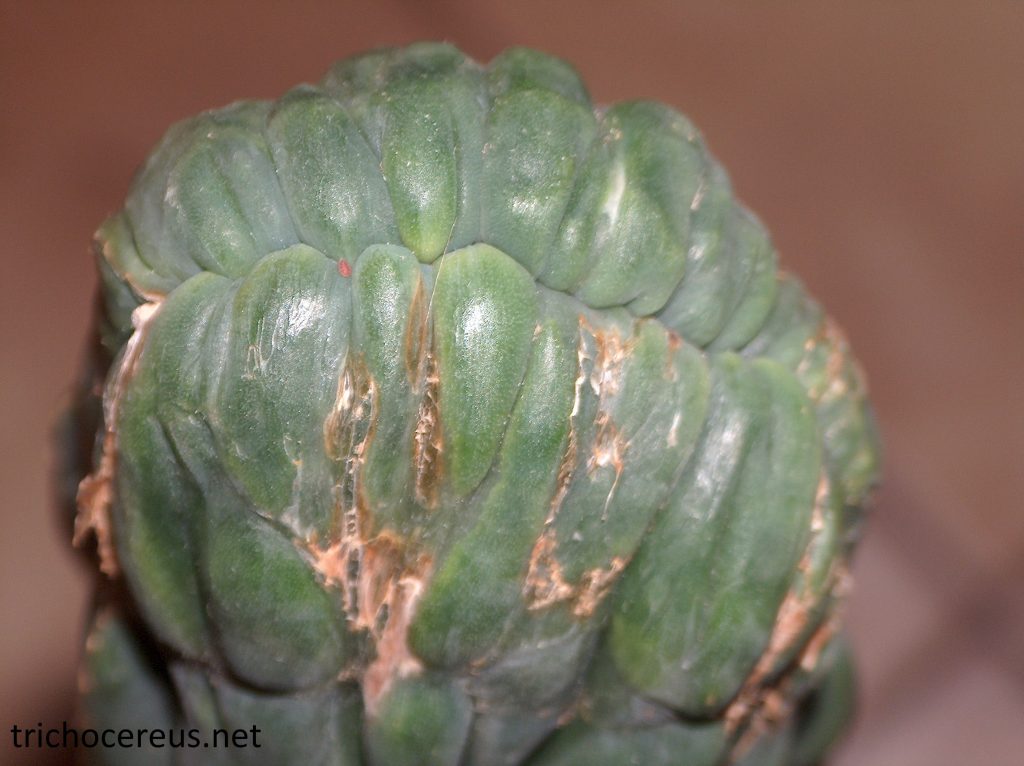
Trichocereus santiaguensis is a regional variety of Trichocereus spachianus. And this clone has been floating around for at least 20 years. It sometimes is labeled Trichocereus pachanoi or Trichocereus bridgesii. And though the spination very rarely comes through, it makes it obvious that this is absolutely not a plant from the San Pedro group. The…

